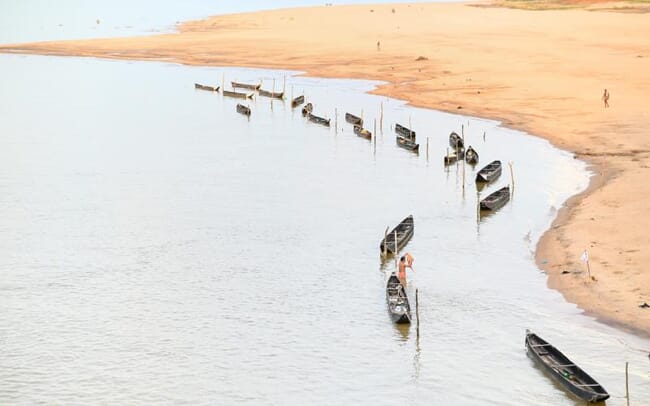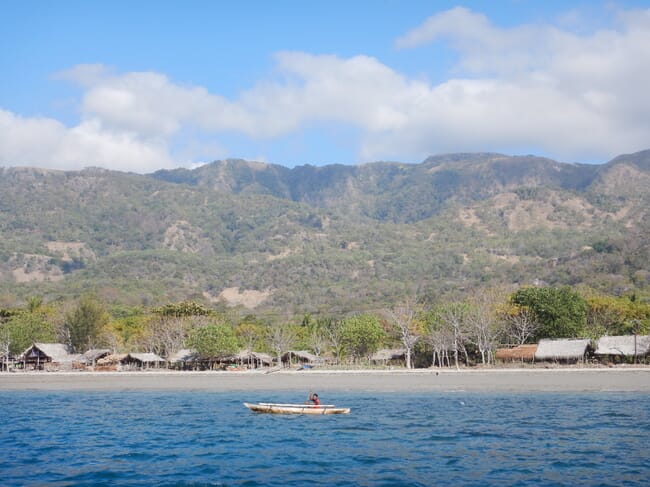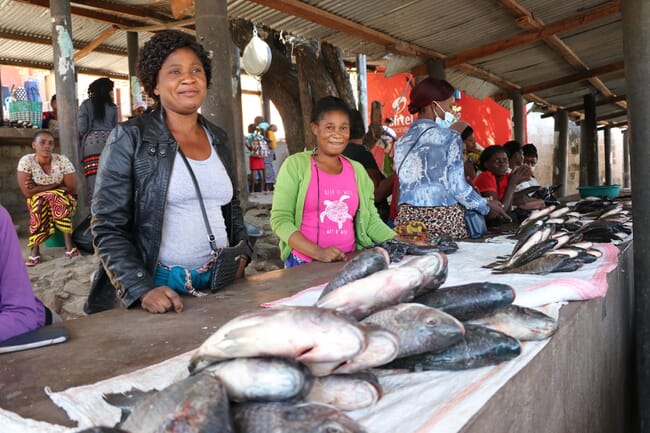
COP27 can help the world achieve blue prosperity, however, aquatic food systems, like every other sector, must first be decarbonised © WorldFish
The transition to a green economy may be fundamental to the survival of people and planet, but it is the realisation of blue prosperity – from oceans, rivers and lakes – that will determine the future well-being of billions of the world’s most vulnerable people.
Fish and other aquatic foods provide an essential source of protein and other nutrients for some three billion people worldwide. But if greenhouse gas emissions remain high, fisheries and aquaculture in every country will face high or very high climate hazards by 2100.
The picture is even more dire for at least 50 countries, including the host of this year’s UN COP27 climate talks, Egypt, which are heavily dependent on aquatic – or blue – foods. These countries face a degree of high or very high climate risk even if emissions fall by the end of the century.
The almost-certain threat posed by climate change to such a critical sector leaves dozens of countries facing the daunting challenge of filling gaps not only in food supplies but in good nutrition, livelihoods and equality. If the world is presently behind in achieving the UN’s Sustainable Development Goals, including ending hunger by 2030, then the decline of aquaculture and fisheries due to climate change would put them out of reach.
Climate negotiators at COP27 must be yet more ambitious and commit to a roadmap towards unlocking a shared “blue prosperity” that allows fisheries and aquaculture, and those who depend upon them, to thrive.
As world leaders and policymakers gather at COP27, research and scientific evidence offers valuable guidance for the key elements that would change the trajectory for the blue economy.
First, aquatic food systems, like every other sector, must be decarbonised to decouple aquaculture and fisheries from the emissions that threaten their very survival in the long-term. Even though the production of various aquatic species already has a lower carbon footprint than land-based meat, blue food systems can and must be further decarbonised to reach optimum sustainability.
Low-carbon policies and innovations exist at every stage of the value chain, starting with maintaining healthy stocks of fish and other aquatic animals. With more fish available, fisherfolk need to spend less time and fuel at sea, bringing down emissions by up to 50 percent, while a recent study also found that fish help remove 1.65 billion tonnes of carbon from the atmosphere.

Low-carbon blue food systems should be reinforced for greater resilience against climate shocks that impact aquatic ecosystems © WorldFish
In aquaculture, most emissions are associated with fish feed, and so switching to unfed species or improving breeds to need less feed can bring down greenhouse gas emissions. One such example is the Genetically Improved Farmed Tilapia, which has been selectively bred by WorldFish scientists to grow 85 percent faster than other farmed strains without the need for commercial feed. In Egypt, this has shown a 36 percent lower impact on the environment compared to conventional breeds.
And supply chain innovations such as affordable solar powered freezers with natural refrigerants can both reduce food loss and waste through better cold storage and reduce emissions from energy use.
Second, low-carbon blue food systems should be reinforced for greater resilience against climate shocks that impact aquatic ecosystems.
Defences that minimise the risk posed by climate extremes range from the high-tech, with satellite-based early warning systems that give notice of events like floods and droughts, to nature-based solutions, such as mangrove restoration and the use of seagrasses to promote coastal defence.
In Kenya, a fishing community off Vipingo Coast concerned by over-fishing and reef degradation established a Locally Managed Marine Area and imposed a “no-take” zone. In 15 years, the coral reefs have been restored by 30 percent while stocks of fish have increased by 400 percent.
Next, communities reliant on blue foods need climate-proofed infrastructure and services to protect both food supplies and livelihoods.

Through resilient, low-carbon and climate-proofed blue food systems, it is possible to build healthy and prosperous communities © Agness Chileya, WorldFish
For instance, investing in modelling to determine the safest place to build a jetty will limit the exposure to damage caused by extreme weather events. Similarly, fisherfolk need access to effective insurance that compensates them for storms or other climate-related disasters. Though index-based insurance for crops and livestock has existed for some time, the first fisheries index insurance scheme was launched only in 2019.
Finally, through resilient, low-carbon and climate-proofed blue food systems, it is possible to build healthy and prosperous communities, but this requires cross-cutting policies that embed fisheries and aquaculture into nutrition, health, justice, gender, economics and environmental agendas.
It also requires support, including recognition, rights and investment, for small-scale actors, who are often neglected when it comes to climate finance and loss and damage reparations. In the interests of climate justice, COP27 must balance the scales to reflect the disproportionate risk that aquatic food-dependent communities face.
Countries dependent on blue foods cannot and should not be expected to turn climate vulnerability into prosperity alone. High-income countries have a key role to play in releasing debt burdens, unlocking climate adaptation financing and sharing technology and innovation to ensure the vision of a shared blue prosperity is fulfilled.
Fully harnessing science, policy and financial resources can mean that those currently most vulnerable not only survive the climate emergency but are also able to thrive.
This opinion piece by Essam Yassin Mohammed and Michelle Tigchelaar was originally published in The National




